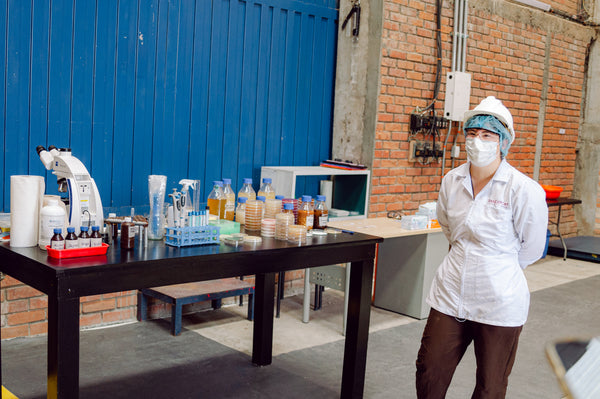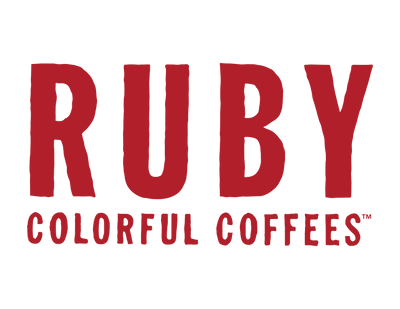This morning, we made our way to Banexport's mill in the city of Popayan. There is a truck weighing station outside and an area where producers bring their product to a large scale. The producers' bags have a sample taken out of them and you can see that the coffee is still in its parchment. The sample is then milled at the tiny mill, meaning the parchment is then removed.
 Removing a sample from upon arrival
Removing a sample from upon arrival
Coffee sample - parchment still in tact
The next step is the density sorter where there are different screen sizes to sort the green coffee by size. The sample starts at the top and is shaken by the density sorter to remove pieces that are too small (removed) and allows the desired size coffee to stay on the higher screen. Some mills perform this process manually by hand! That sample is then manually sorted where they pick out all the defects by hand. They have a grading scale that determines how much they will pay the producer for their coffee. At the same time they are taking a lot of other measurements including density, moisture, and water activity. If their minimum requirements are not satisfied, they suggest to the producer how to fix it and bring it back.

Sorted green coffee that is considered too small

Hand sorting to remove defects

Mill where green coffee has their parchment removed

Emily with Gran Galope - currently a component in our signature blend, Creamery

Coffee ready to be shipped
The next part of this was a very unique and interesting part - one of my favorites. This is part of Manos Juntas, a project striving to make coffee production more profitable for producers and consistently delicious for consumers via Banexport. Manos Juntas is a micromill - a private, small-scale wet and dry mill. They purchase cherry from over 60 producers throughout Cauca and Huila, paying them more expeditiously while taking on the risk of finishing and selling the coffee. Their process is forward thinking, seeking solutions for many of coffee's production problems.

One of the microbiologists on staff at Manos Juntas
A summary of the Manos Juntas process:
- Purchase of cherries: Producers are paid 25% more than the standardized Colombian rate, and 2-3 months sooner than if they were to sell their own coffee in parchment
- Pre-Processing: Cherries are sorted by size and density for homogenization and consistency in fermentation and drying rate; cherries are also cleaned with UV light and ozone solution to eliminate foreign material and microorganisms that would impact fermentation
- Processing: Powered by solar panels, Manos Juntas produces washed, honey, and natural-process coffees, as well as anaerobic versions of these processes.
- Drying and Post Process: Coffees are dried in a solar dryer where humidity is controlled at 30%. Wastewater is filtered and treated before being pumped back into the city's water system. Coffee byproduct is repurposed in multiple ways like fertilizer with the goal of generating more profits to be passed back to the producer

Conveyer that lifts cherries to a tank for washing where sticks and leaves are removed
 Fermentation tank (bioreactor)
Fermentation tank (bioreactor)

Different yeasts, bacteria and molds found on coffee

They use microorganisms in the fermentation process that they know work well with each specific variety. After they isolate the ones that they want, they have to grow them (see the petri dishes) and add them in exact amounts to the fermentation water.

Coffee drying
Cupping!
We ended the day with two different cuppings - I discovered that one of the ones I enjoyed was from FUDAM (used in Creamery, Portage and August).
 Warehouse cupping
Warehouse cupping
 Whew this was a long day - thank you for following along!
Whew this was a long day - thank you for following along!
- Lead Roaster Emily
